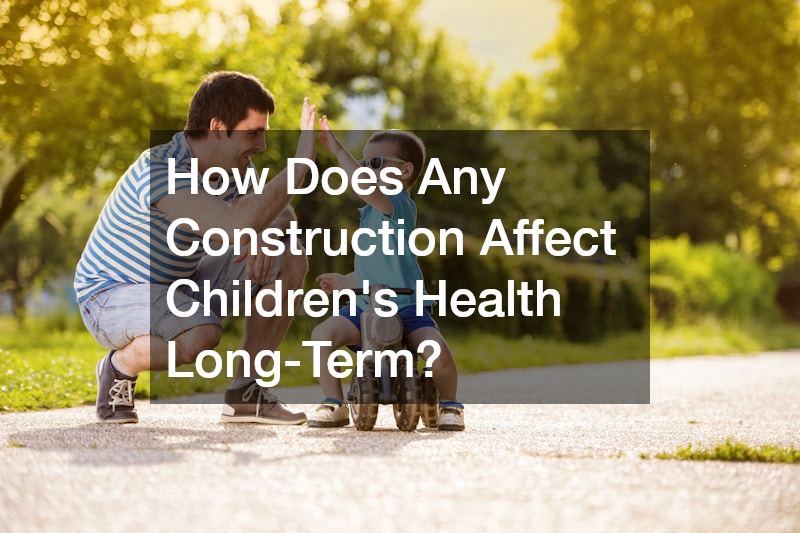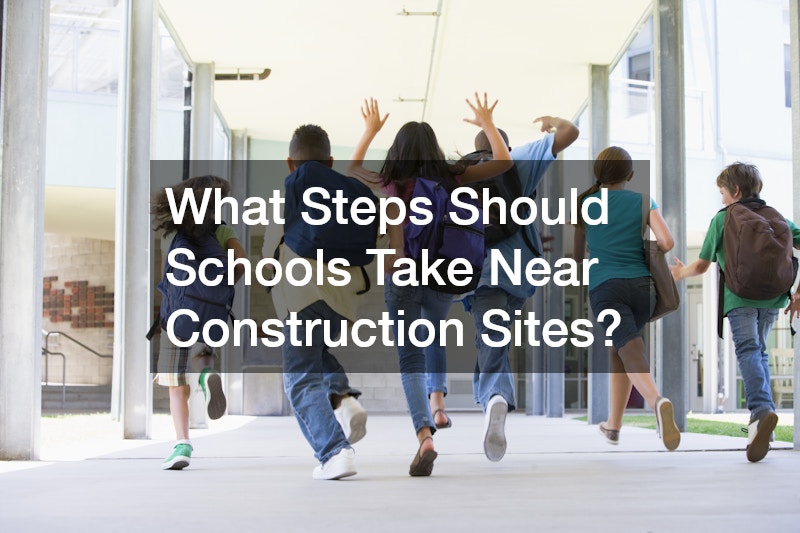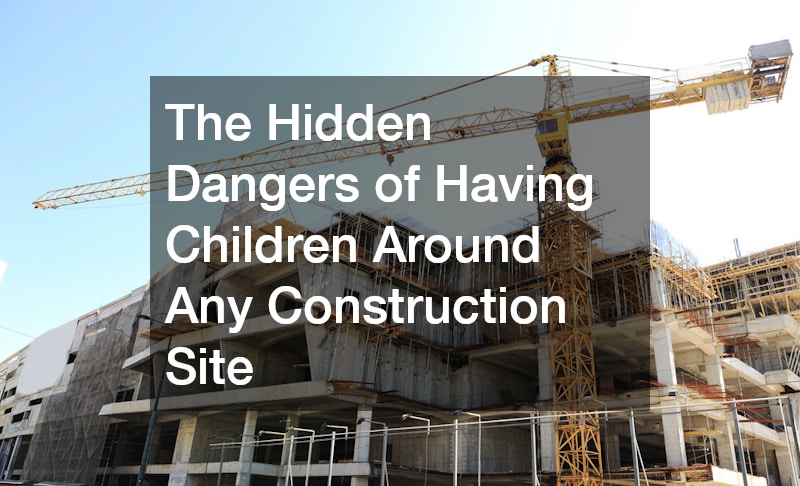Construction sites are hubs of activity, essential for infrastructure and community development. However, essentially any construction site can pose significant safety risks, especially to children. Despite safety regulations, the curiosity of kids and the hazards present, like heavy machinery, open trenches, and hazardous materials, can lead to devastating accidents. From general contractors to specialized trades like electrical contractors, everyone involved in construction must prioritize safety. Children are naturally drawn to the noise, movement, and intriguing equipment often found at construction sites, making them especially vulnerable. The dangers extend beyond physical injuries to include psychological and long-term health impacts. This article explores the hidden dangers children face around any construction site and practical solutions for ensuring their safety.
1. Why Are Construction Sites So Dangerous for Children?
1.1 Physical Hazards and Heavy Machinery
Children’s natural curiosity can lead them toward dangerous areas. Heavy machinery like forklifts, backhoes, or even a crane system may seem fascinating to a child but can lead to catastrophic consequences if approached. Operators often have limited visibility, making accidents more likely. General contractors and equipment rental companies must work together to implement safety protocols, such as fencing and warning signs, to protect children from these risks.
1.2 Unsecured Materials and Open Spaces
Materials like bricks, steel beams, and tools can pose significant risks if left unsecured. Additionally, open spaces like trenches and crawlspace insulation areas may appear as intriguing hiding spots for children but can be life-threatening if a collapse or suffocation occurs. Properly securing work areas and storage zones is a non-negotiable responsibility for contractors.
1.3 Noise and Air Pollution
Noise pollution from equipment like jackhammers and crane systems can damage children’s hearing. Dust from construction sites can also irritate respiratory systems, especially if harmful substances like epoxy flooring compounds are being used. To mitigate these risks, any construction site must follow strict health and safety guidelines, particularly when working near residential areas.
2. The Risks of Having Children Around A Construction Site

2.1 Risk of Injury from Tools and Debris
Open construction sites often have tools, nails, and wires scattered across the area. Without proper barriers, children can stumble upon these hazards, leading to severe injuries. Dumpster rental services play a crucial role here by ensuring debris is properly disposed of, reducing the risk of accidents.
2.2 Falling Objects and Unsecured Scaffolding
Unsecured scaffolding or poorly stored equipment can cause falling objects, which are among the most common hazards at any construction site. General contractors must ensure all scaffolding is stable and materials are secured to avoid preventable accidents.
2.3 Exposure to Electrical Hazards
Electrical contractors working on-site often leave exposed wires or incomplete circuits during ongoing projects. These pose severe risks, including electrocution, to curious children who might touch them. Safety measures like locking electrical panels and labeling live wires can save lives.
3. How Contractors Can Make Construction Sites Safer
3.1 Installing Secure Fencing and Warning Signs
One of the simplest ways to prevent accidents is to install secure fencing. Whether it’s a gun range under construction or a residential building site, fencing acts as a physical barrier to keep children out. Warning signs with universal symbols and bold colors can also deter kids from wandering near dangerous zones.
3.2 Proper Disposal of Construction Waste
Construction waste left unattended increases the likelihood of accidents. Using professional dumpster rental services ensures waste materials are safely stored and removed, keeping the area cleaner and safer.
3.3 Collaboration Among Contractors
General contractors, electrical contractors, and other specialists like masonry contractors must collaborate to implement cohesive safety measures. This includes identifying hazards and scheduling tasks to minimize risk exposure during high-traffic times, such as after school hours.
4. How Parents Can Keep Their Children Safe
4.1 Teaching Kids About Construction Hazards
Parents play a vital role in protecting their children. Teaching kids about the risks of construction zones, like falling debris or harmful substances like epoxy flooring chemicals, can help them understand why they must stay away from such areas.
4.2 Monitoring Play Areas
Parents should ensure children play far from any construction site. If there’s ongoing work near a playground or residential area, supervising children and redirecting them to safer locations is essential.
4.3 Open Communication with Contractors
Maintaining open communication with general contractors or site managers is crucial for staying informed about potential dangers. Knowing the construction schedule can help parents plan activities to keep children out of harm’s way.
5. The Role of Legal and Safety Regulations

5.1 Importance of Compliance
Every construction project must adhere to local safety regulations. General contractors are responsible for following these guidelines to minimize risks. Non-compliance not only endangers lives but also invites legal consequences. In cases of injury, consulting an accident lawyer can help affected families seek justice.
5.2 Government Inspections and Community Involvement
Frequent inspections ensure safety measures are upheld. Community members, including schools near construction zones, should collaborate with contractors to address safety concerns and advocate for stricter controls when needed.
6. Enhancing Construction Site Safety with Technology
6.1 Surveillance Systems
Modern surveillance systems can monitor activity around any construction site, alerting contractors to unauthorized access. This technology is particularly effective for keeping children away from hazardous areas.
6.2 Predictive Analytics for Risk Management
By analyzing data like weather conditions and equipment usage, predictive analytics can identify potential risks at construction sites. This allows contractors to take proactive steps to ensure safety, particularly in high-risk activities involving a crane system or equipment rental machinery.
6.3 Use of Advanced Materials
Safer, more sustainable materials for tasks like crawlspace insulation and epoxy flooring reduce the risk of exposure to harmful chemicals, further protecting nearby communities.
7. How Does A Construction Affect Children’s Health Long-Term?

7.1 Respiratory Problems Linked to Dust and Debris
The dust and debris generated during construction pose serious respiratory health risks to children. Prolonged exposure can lead to asthma, bronchitis, and other chronic respiratory issues. For example, projects involving materials like crawlspace insulation and epoxy flooring often release fine particles and volatile compounds into the air. Contractors should use dust control measures and ensure proper ventilation to reduce these risks.
7.2 Hearing Impairment Due to Prolonged Noise Exposure
The constant noise from heavy machinery, crane systems, and power tools can cause permanent hearing damage, particularly in young children whose auditory systems are still developing. Providing ear protection for workers and residents near construction zones and scheduling quieter activities during peak community hours can help mitigate this issue.
7.3 Chemical Exposure and Its Effects
Construction sites often involve the use of paints, adhesives, and cleaning solvents that contain harmful chemicals. Direct exposure to these materials, or even prolonged exposure to fumes, can affect children’s neurological and physical development. Safe storage and proper handling of these chemicals are essential. Any construction site must follow hazardous material regulations to ensure community safety.
7.4 Sleep Disturbances and Behavioral Changes
Noise pollution and vibrations from nearby construction activities can significantly disrupt children’s sleep patterns. Sleep deprivation often leads to irritability, difficulty concentrating, and behavioral issues. General contractors should work closely with communities to minimize overnight work and establish schedules that allow for uninterrupted rest.
7.5 Importance of Regular Health Checkups
Families living near construction sites should prioritize regular health checkups for their children. Monitoring respiratory health, hearing, and overall development can help detect early signs of construction-related health issues. Additionally, discussing risks with healthcare professionals ensures parents are better equipped to protect their children.
8. How Do Construction Sites Affect Community Well-Being?
8.1 Impact on Neighborhood Traffic and Accessibility
Construction activities often block roads, sidewalks, and driveways, creating traffic disruptions and limiting accessibility. For example, a site involving large-scale equipment rentals or a masonry contractor might require detours, which can increase the risk of accidents, especially for children walking to school. Contractors should collaborate with local authorities to manage traffic effectively.
8.2 Changes in Local Environment and Aesthetic
Construction can alter the environment, disrupting green spaces and causing visual pollution. While these changes may be temporary, they can still negatively affect children’s outdoor experiences and community cohesion. Restoring affected areas after project completion is critical for rebuilding community trust.
8.3 Social and Economic Implications
Construction can bring both benefits and challenges to communities. Projects may increase property values or provide new amenities, but they can also create noise, dust, and congestion. Ensuring community input in planning stages can help balance these impacts and foster cooperation between contractors and residents.
8.4 Community Safety Initiatives and Collaborations
Successful safety programs often involve collaboration between contractors, residents, and local governments. Implementing measures such as designated pedestrian zones, scheduled work hours, and regular safety inspections can significantly improve safety for children and families living near construction sites.
8.5 Case Studies of Successful Safety Programs
Communities that actively engage in safety programs often see better outcomes. For instance, projects that incorporate regular meetings between contractors and residents or use advanced surveillance technologies to monitor site boundaries have effectively minimized risks and improved relations between construction teams and the public.
9. What Steps Should Schools Take Near Construction Sites?

9.1 Ensuring Adequate Safety Measures within School Premises
Schools near active construction zones must implement additional safety precautions. These include erecting barriers to keep students away from hazardous areas and ensuring playgrounds and walkways are safe. Construction companies working near schools should prioritize children’s safety by avoiding high-risk activities during school hours.
9.2 Coordination with Construction Authorities
Schools should maintain open lines of communication with construction managers and general contractors. This ensures that school administrators are informed about the project’s timeline and potential risks, allowing them to implement necessary precautions proactively.
9.3 Safety Drills and Emergency Preparedness
Schools near construction zones should conduct regular safety drills to prepare students and staff for emergencies, such as falling debris or machinery malfunctions. These drills can save lives by ensuring that everyone knows how to respond in case of an incident.
9.4 Educational Programs on Construction Safety
Educational programs can help children understand the dangers associated with construction sites. By learning about hazards like electrical risks, falling objects, and exposure to chemicals, children can make more informed decisions about avoiding dangerous areas.
9.5 Communication with Parents and Nearby Residents
Keeping parents informed about construction activities near schools is critical. Regular updates allow families to plan safe routes for their children and avoid potential hazards, ensuring peace of mind for everyone involved.
10. How Can Technology Enhance Safety at Construction Sites?
10.1 Innovations in Safety Equipment
Technological advancements in safety gear, such as smart helmets and enhanced visibility vests, are helping protect workers and bystanders. For example, these technologies can include sensors that alert workers to nearby hazards, providing an additional layer of safety for children living near any construction site.
10.2 Use of Surveillance and Monitoring Systems
Surveillance cameras and monitoring systems are invaluable tools for preventing unauthorized access to construction zones. These systems can identify children or other unauthorized individuals entering the site and send alerts to site managers or local authorities.
10.3 Predictive Analytics for Risk Management
Predictive analytics can assess potential risks in real time, such as predicting when a crane system might be at risk of malfunctioning or when weather conditions could increase hazards. Contractors can use this data to schedule safer work hours and implement preventative measures.
10.4 Virtual Reality Training for Workers
Virtual reality (VR) technology is increasingly being used to train construction workers on safety protocols. By simulating potential risks in a controlled environment, workers can learn to respond effectively, reducing the likelihood of accidents that could endanger children near the site.
10.5 Technology Partnerships and Collaborations
Collaboration between technology providers and construction companies is essential for developing innovative solutions that enhance safety. For example, partnerships might focus on integrating advanced surveillance with community alert systems to keep residents informed about nearby risks.
Any construction site, whether a commercial building, gun range, or residential project, poses significant dangers to children. However, these risks can be mitigated through proper planning, collaboration among contractors, and active community engagement. By adhering to safety regulations, implementing advanced technologies, and educating families, we can ensure these spaces remain secure for everyone. From accident lawyers to general contractors, everyone involved in construction projects has a role to play in keeping our communities safe.

